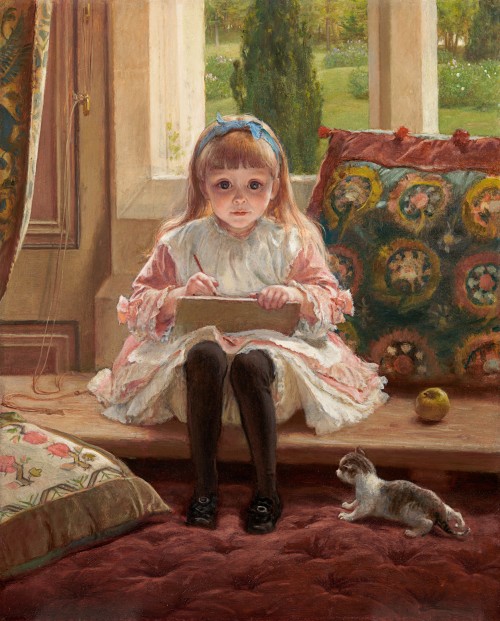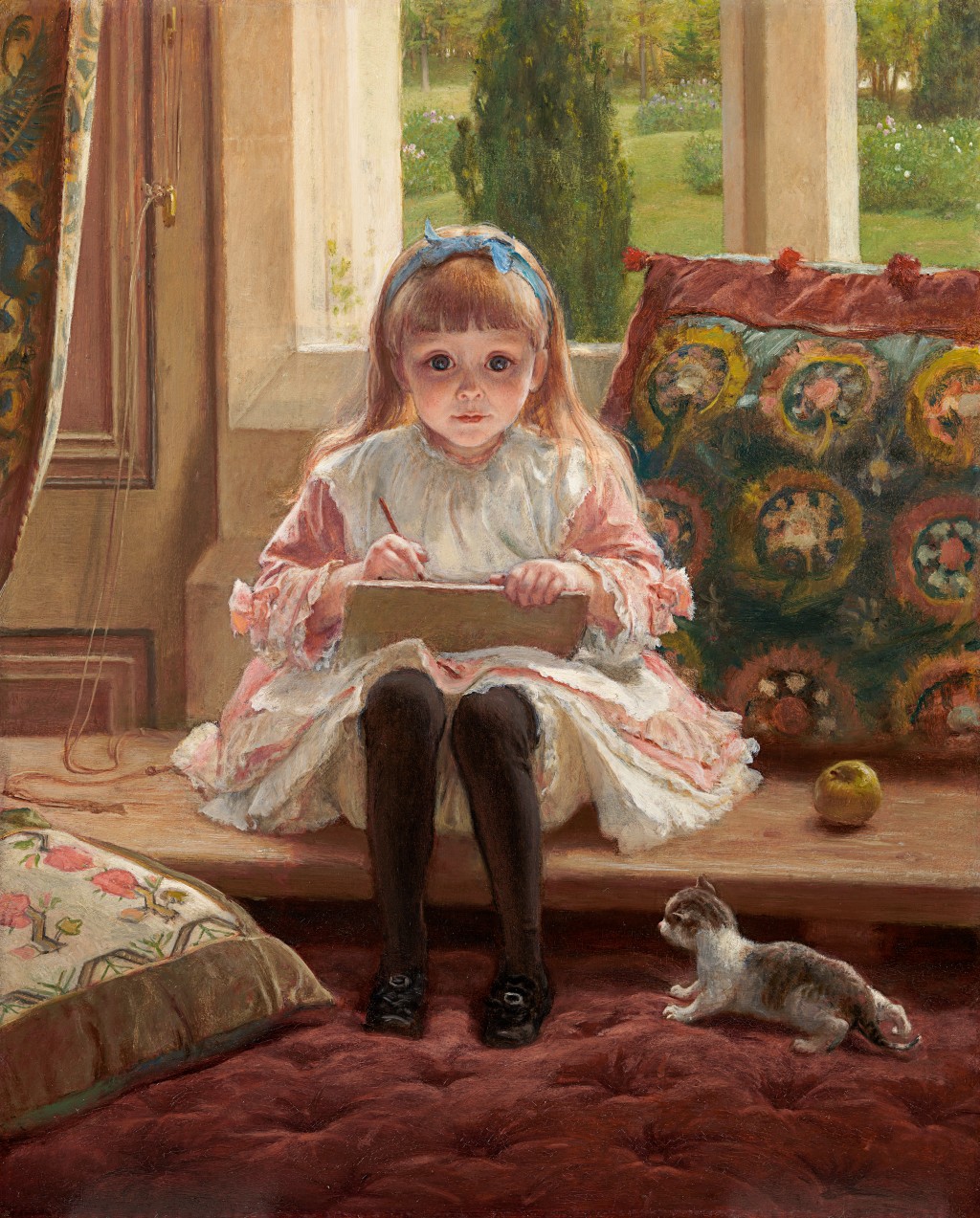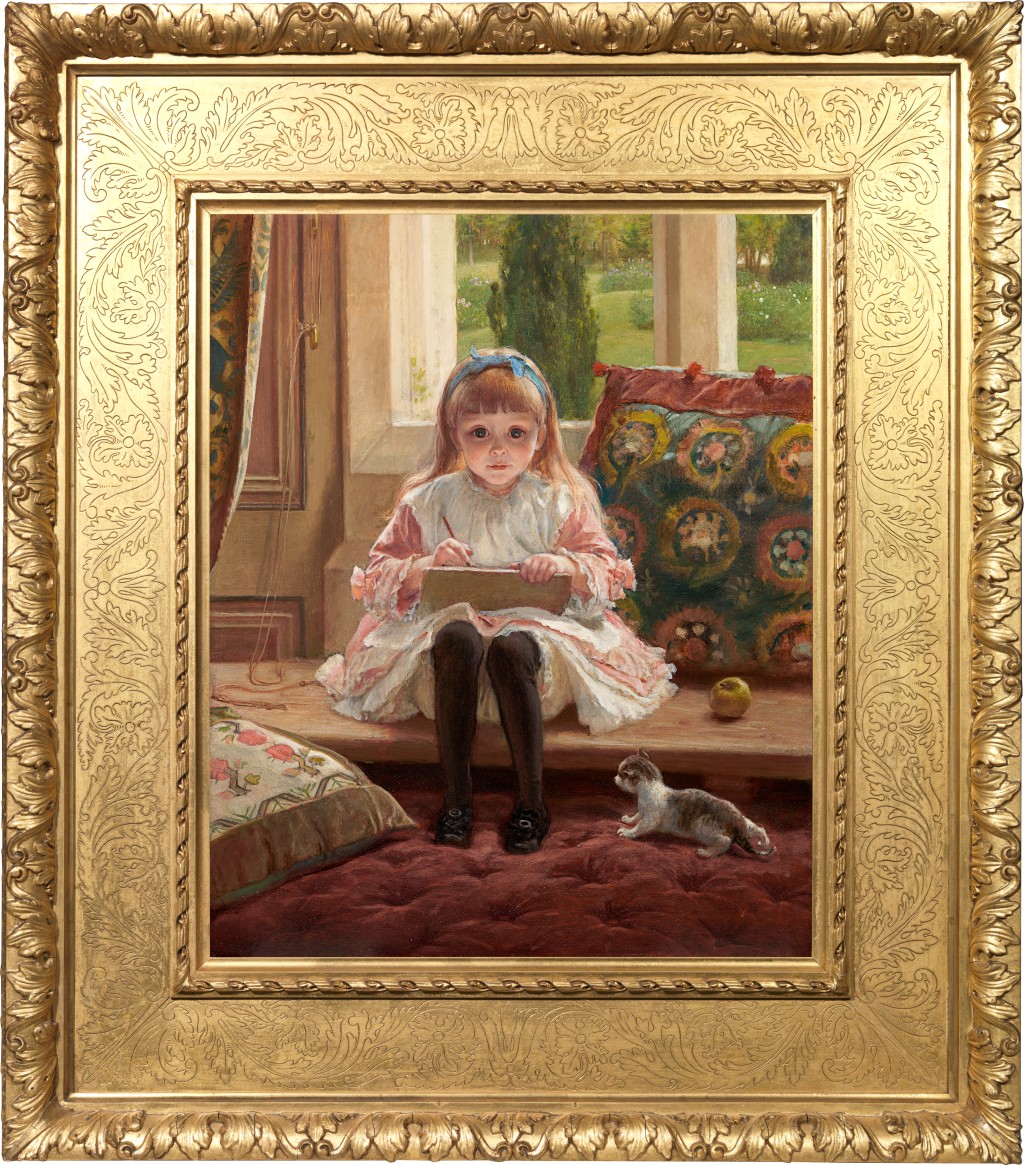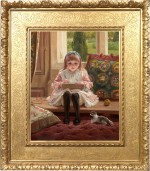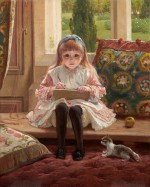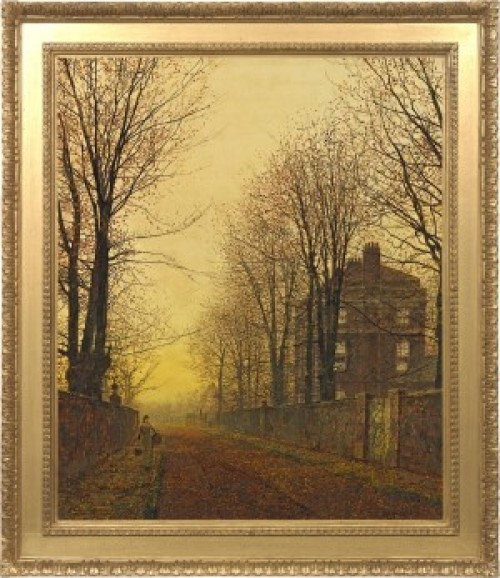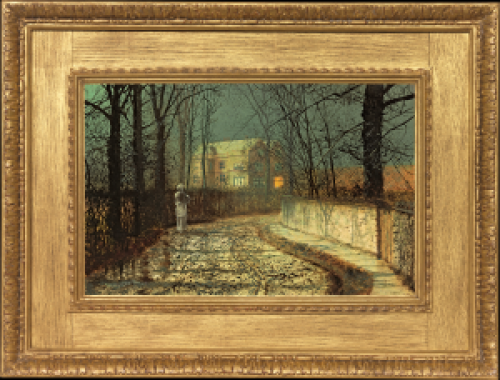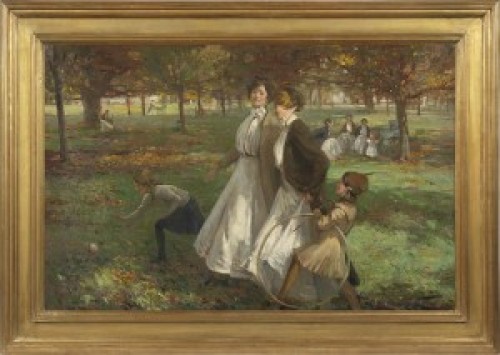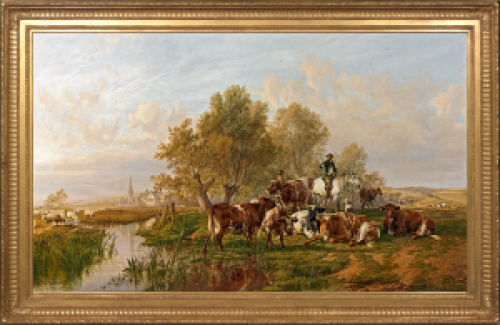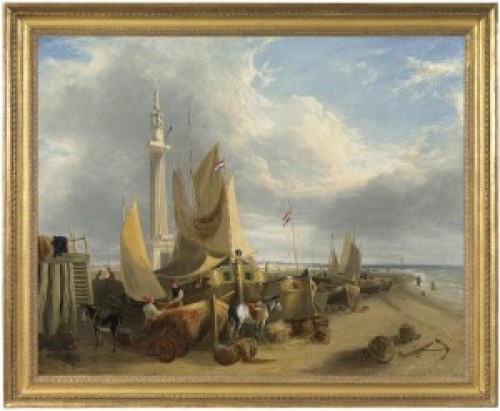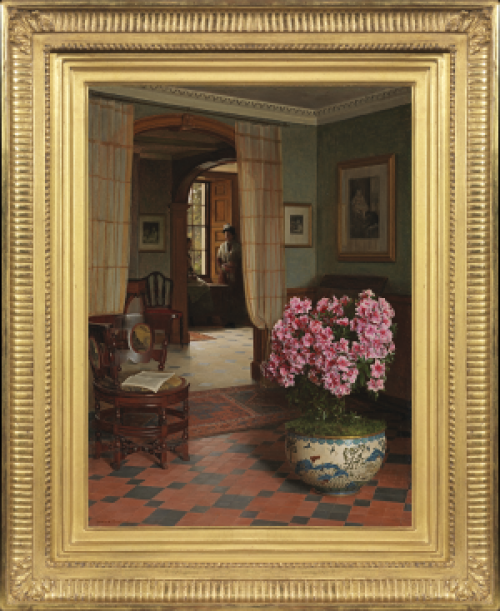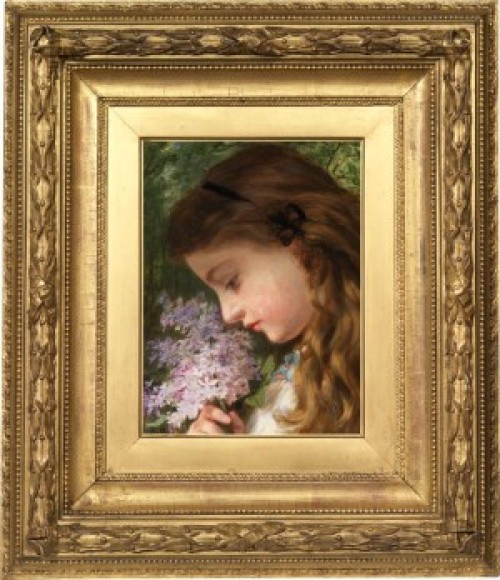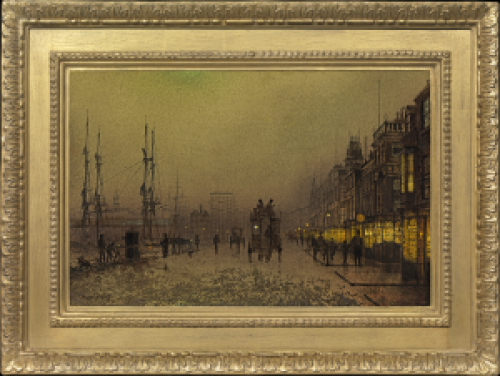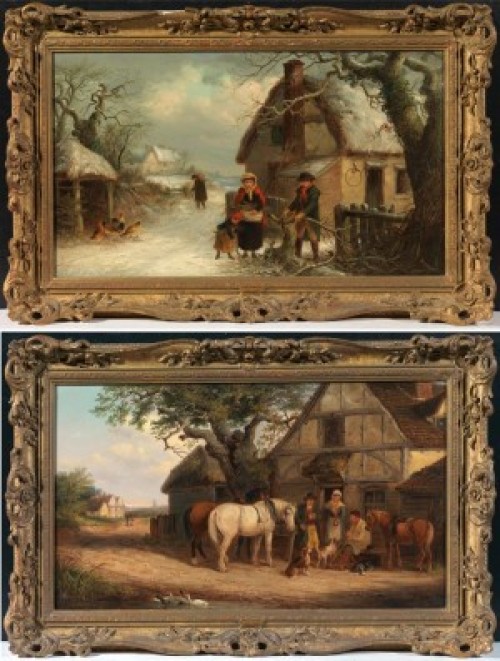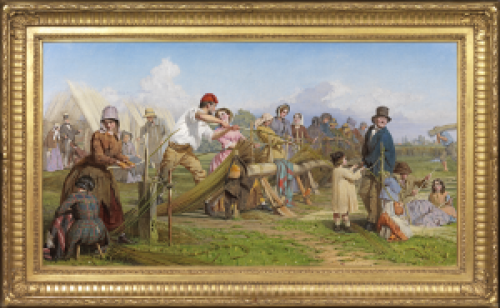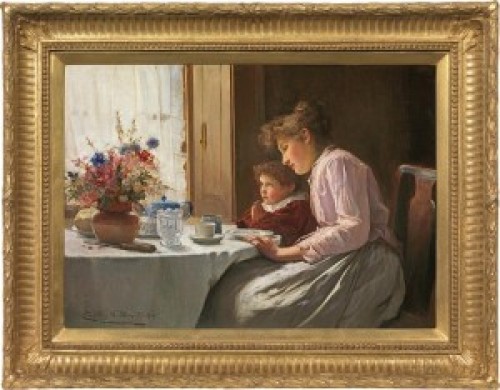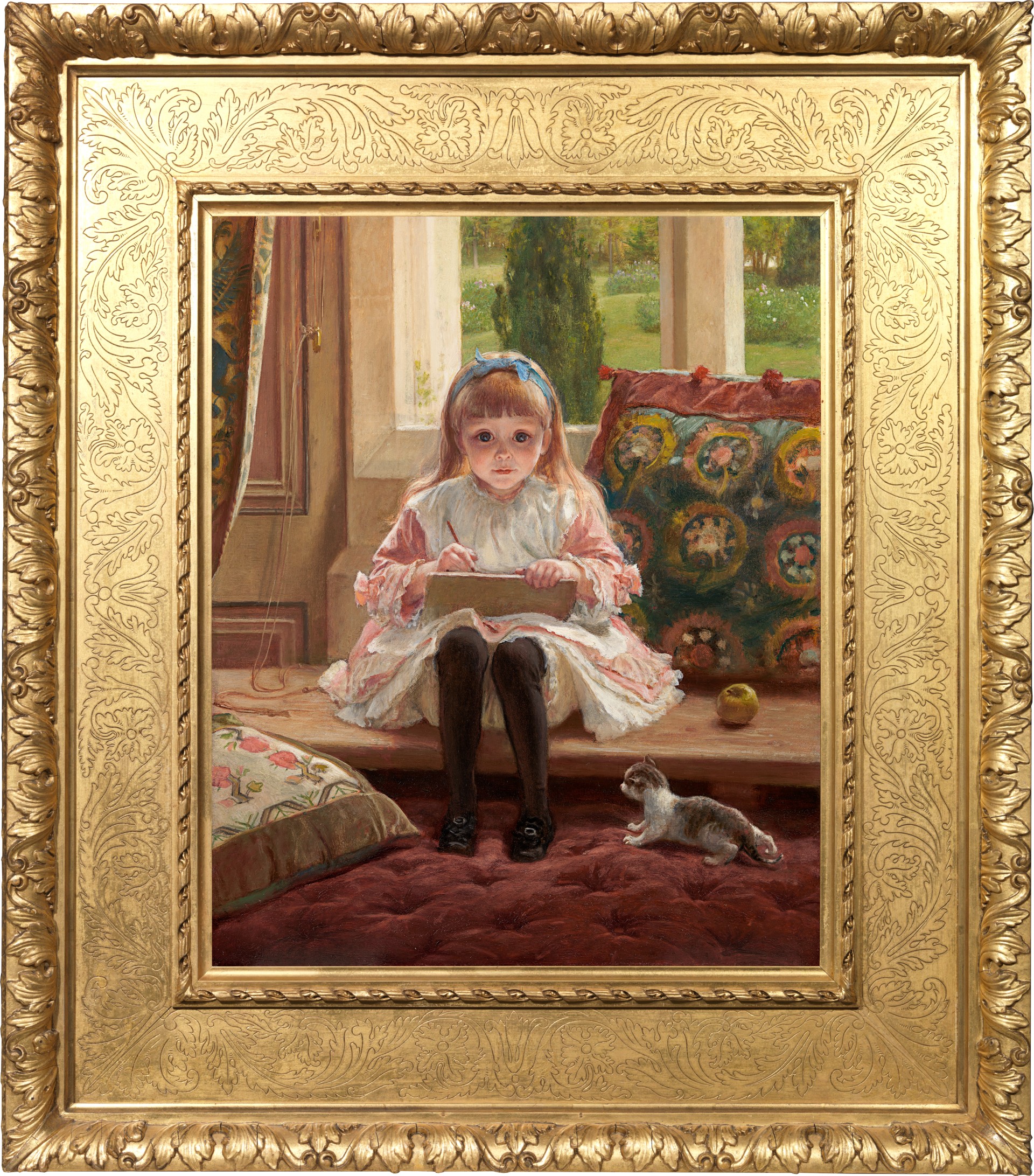FREDERICK GOODALL RA
1822 - London - 1904
Ref: CC 123
Portrait of Rica sitting in a bay window at Graeme’s Dyke
Oil on panel: 22 x 17 ¾ in / 55.9 x 45.1 cm
Frame size: 34 x 29 ¾ in / 86.4 x 75.6 cm
Painted circa 1880
Provenance:
The sitter, Alice Federica Goodall, known as Rica, then by descent to her god-daughter, then by descent, private collection, UK
Literature:
Frederick Goodall, The Reminiscences of Frederick Goodall RA with Two Portraits, The Walter Scott Publishing Co. Ltd, London and Newcastle-on-Tyne 1902, p.297[1]
This beautiful portrait of Frederick Goodall’s daughter at the window of their family home was painted at the peak of the artist’s success during the 1870s and 80s. Christopher Wood writes in his celebrated book, Victorian Painting, ‘at his height, Goodall was earning £10,000 a year, and commissioned Norman Shaw to build him a large house…near Harrow.’[2] Goodall writes in his Reminiscences: ‘In 1856, a short time after he had sold Bentley Priory, I purchased from the Maquis of Abercorn, Graeme’s Dyke, a hundred acres of freehold land, forming part of the Harrow Weald Estate. I longed to live in the country, for I am particularly fond of gardening and flowers, and I intended to make it my home…I built a house from designs by Norman Shaw, RA, upon which he bestowed much thought to make it as picturesque as he could…Through this portion of the estate an earthwork ran, supposed to be an ancient British fortification, which was also at some time occupied by the Romans…The name of this earthwork was called in the Ordnance Survey map Grime’s Dyke. This is the true name, but Norman Shaw begged me to alter it to Graeme’s Dyke, as the other title gave one the impression of its being dirty!’[3]
The house was completed in 1872, which coincided with Goodall’s second marriage to Alice Mary Tarry (1850-1913).[4] On the artist’s second return from Egypt, he left London, giving his studio in Camden Square to his friend, the artist, Lawrence Alma-Tadema, and settled into life at Graeme’s Dyke, where he entertained friends and patrons including the Prince of Wales and Charles Dickens.[5] Goodall describes painting some of his most important pictures there, including The Subsiding of the Nile, 1873, versions of which are owned by the Russell-Cotes Art Gallery and Museum, Bournemouth, Sunderland Museum & Winter Gardens and Guildhall Art Gallery, London. Graeme’s Dyke (now Grim’s Dyke Hotel) was later sold by Goodall to Robert Heriot, partner in the private bank CJ Hambro & Son, who owned the property for ten years before it was acquired by Sir William Gilbert, one of England’s foremost dramatists, famous for his collaborations with Sir Arthur Sullivan. It was converted into a hotel in 1970.[6]
The angelic artist (presumably sketching her father) in this enchanting work, Alice Federica Goodall, known as Rica, was born in 1876 and was painted by her father several times in his exhibited works, including Artist and model, 1881 (Rica with pet pug), Old Maid, 1886 (depicting Rica and the daughter of Linley Sambourne), Puritan and Cavalier, 1886 (depicting his son Frederick (Fritz) as well as Rica) at the Walker Art Gallery, Liverpool and Trespassers, 1886 (private collection, previously with Richard Green). Later Goodall exhibited two near full-length portraits of Rica as an elegantly dressed young woman at the Royal Academy; Rica, daughter of F Goodall, Esq, RA, 1894 and The Artist’s Daughter, 1898, at the Glynn Vivian Art Gallery, Swansea.
Frederick Goodall, Puritan and Cavalier, 1886 Frederick Goodall, The Artist’s Daughter
Walker Art Gallery, Liverpool Glynn Vivian Art Gallery, Swansea
Frederick Goodall was a celebrated painter of biblical and Orientalist subjects, as well as an accomplished and successful portraitist. The Goodall family produced many artists. Frederick's father Edward Goodall (1795-1870) was a landscapist who worked in oil and engraving and his brother Edward Alfred Goodall (1819-1908) was a painter and watercolorist of battle and continental scenes. Frederick showed his talent early, winning a silver Isis medal at the Society of Arts in 1837 at the age of 14. Both of his sons, Frederick Trevelyan and Herbert Goodall, were portrait and genre painters.
The artist's early subject matter reflected his travels to Ireland with the artist F W Topham in 1843. These peasant scenes, in the tradition of Wilkie were supplanted in his maturity by a fascination with Egyptian views and scenes of Biblical genre. Goodall was elected an associate of the Royal Academy in 1852 and was made a member in 1863. He exhibited at the Exposition Universelle of 1867 in Paris.
The work of Frederick Goodall is represented in many publica collections including Tate Britain and the Victoria and Albert Museum in London and the city art galleries of Bristol, Liverpool and Leicester.
[1] ‘My daughter has another picture of herself seated in the bay-window at Graeme’s Dyke, with pencil in her hand and sketch-book, and a little kitten keeping her company.’
[2] Christopher Wood, Victorian Painting, Weidenfeld & Nicolson, London 1999, p.358.
[3] Frederick Goodall, The Reminiscences of Frederick Goodall RA with Two Portraits, pp.279-281.
[4] See The Second Mrs Goodall, Bolton Museum and Art Gallery. As well as her husband’s frequent model, Alice was also an artist, exhibiting at the Royal Academy between 1890-96.
[5] See ‘Frederick Goodall R.A. 1822-1904’ at http://www.goodallartists.ca/newpage3.htm
[6] https://grimsdyke.com/history/.

